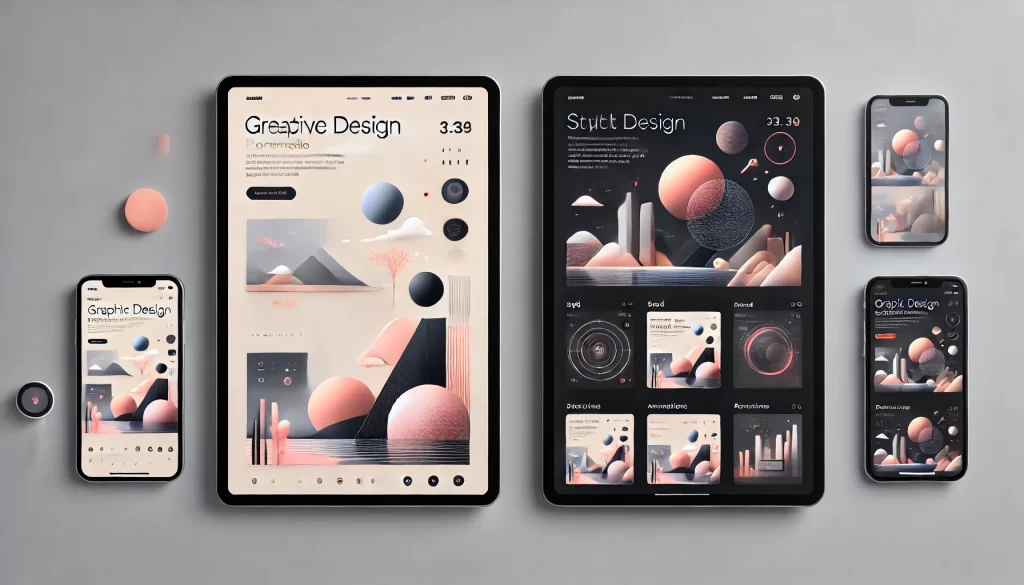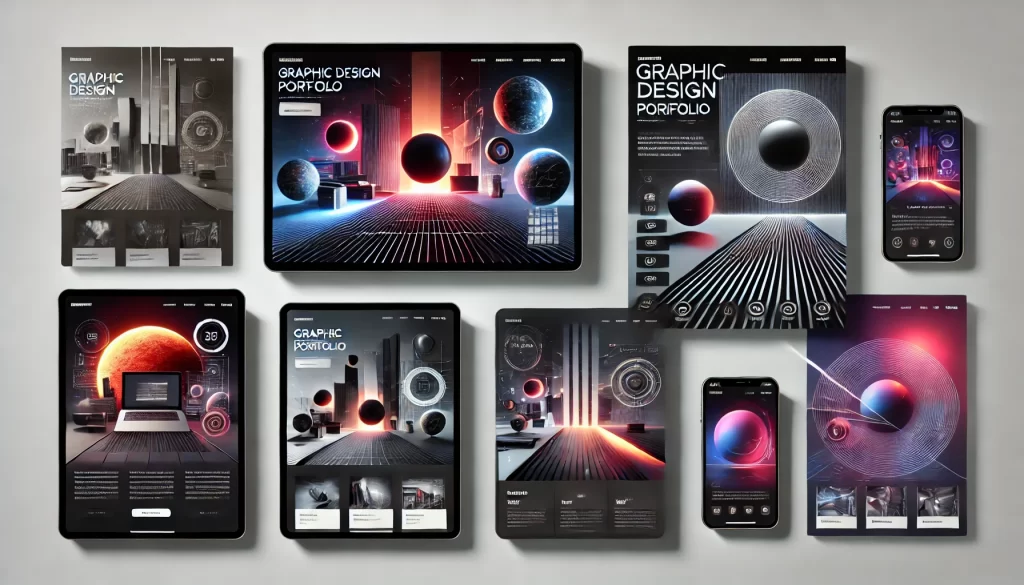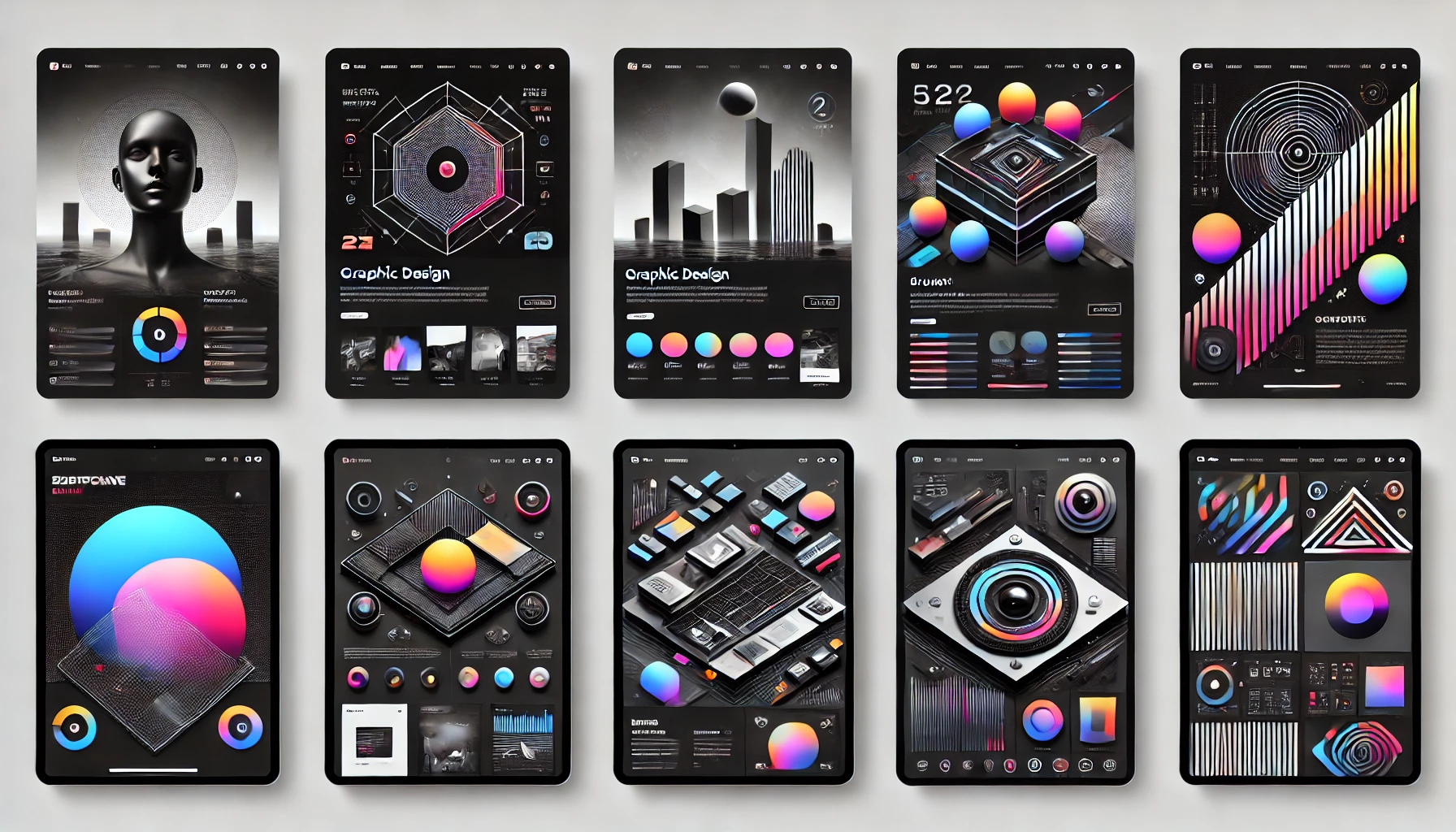Templates Are Not Cheating They’re Strategy
In 2025, the debate isn’t whether to use a portfolio template. It’s which one will elevate your work while making you more hireable.
As a designer, your portfolio needs to feel custom, polished, and tailored, but that doesn’t mean building it from scratch. With the right template, you can launch faster, scale smarter, and still reflect your creative identity.
The key? Choosing a design that balances layout logic, visual hierarchy, and storytelling flexibility all while staying fast, responsive, and SEO-ready.
Let’s break down the best graphic designer portfolio website templates not just by aesthetics, but by function and fit.

Suggested Posts:
• Real Estate Website Design and Development
• Best Home Inspection Websites
• Home Inspection Website Builder
What Makes a Portfolio Template Great?
The best templates aren’t just pretty. They offer:
- Clear, modular information architecture
- Strong visual hierarchy (headline → work → CTA)
- Responsive scaling across devices
- Built-in CMS or case study support
- Optimized page load speed
- Space for personal brand tone and creative expression
Think of a template like a stage. Your work is the performance but the lighting, layout, and flow all impact how it’s received.
Best Graphic Design Portfolio Templates by Platform
Webflow Templates – Best for Customizable Modern Design
Webflow gives you visual control, clean code, and powerful CMS features—perfect for designers who want elegance + interaction.
Template: Lumen
- Full-bleed visuals with clear nav
- CMS-powered case studies
- Smooth scroll and hover micro-interactions
- Built-in blog and testimonials sections
Why it works: Perfect balance of minimal structure and creative motion.
Template: Ollie
- Editorial style with split-grid layout
- Focused on typography and spacing
- Modular blocks for flexibility
- High performance and fast load time
Best for: Designers with strong visual identity who want bold, minimalist scaffolding.
Suggested Posts:
• Authority and Credibility in Real Estate Websites
• Case Studies and Examples
• Free and Affordable Real Estate Website
Squarespace Templates – Best for Visual-First Simplicity
Squarespace delivers plug-and-play beauty. If you’re launching fast and want everything in one place (hosting, SEO, blogging), this is your spot.
Template: Bryant
- Clean, gallery-forward design
- Sidebar nav with anchored scrolling
- Responsive breakpoints for all screens
- Pre-built project page layout with image + text blocks
Why it works: Feels premium but easy to update—even for non-tech designers.
Template: Noll
- Single-page design for simple portfolios
- Includes floating nav and scroll animations
- Focus on modular sections and storytelling
- Quick-edit sections for the intro, bio, and featured work
Best for: Freelancers with 3–5 great projects who want a lean, stylish presence.

Wix Templates – Best for Speed + Visual Impact
Wix is easy to start with and now includes powerful editing tools, animation support, and CMS-lite functionality.
Template: Graphic Designer Portfolio
- Horizontal scrolling gallery
- Layered images + hover text reveals
- Dark mode friendly
- Built-in contact form and service section
Why it works: Aesthetic-first with edgy transitions and layout flexibility.
Template: Clean Studio
- Light, grid-based design
- Excellent for showcasing many projects
- Built-in resume and testimonial section
- Pre-configured for mobile templates
Best for: Designers building out a broader personal brand.
Choosing the Right Template for Your Style
Ask yourself:
- Do I want to focus on visuals or process?
- Will I be writing long case studies or keeping it gallery-based?
- Do I need blog, booking, or store functionality?
- Am I more minimalist or expressive in a visual tone?
Match the template to your intent not just your vibe.
Template Features That Matter
Visual Hierarchy
Your homepage should move users from “Who are you?” to “What do you do?” to “How can I reach you?” in less than 15 seconds.
Modular Sections
Avoid fixed layouts. Templates that support blocks or custom sections scale better with your needs.
Responsive Scaling
Your site should feel intuitive on mobile, tablet, and desktop without breaking layout integrity.
Animation + Hover Effects
Subtle motion signals interactivity and modernity, but keep it purposeful, not performative.
CMS or Collection Support
If you plan to publish new projects often, a CMS-ready template will save you hours.
Key Takeaways
There’s no shame in using a template just don’t use the wrong one.
The best portfolio websites for graphic designers today are built on smart foundations: clean layout, responsive behavior, and enough personality to reflect your brand.
Modern, minimal, and creative all of these are valid directions. But the real win is when your template serves your content and makes your work easy to hire.
- Choose templates with flexibility, not just style
- Visual hierarchy and responsive design are non-negotiable
- Webflow = custom elegance; Squarespace = plug-and-play beauty; Wix = fast and expressive
- Match your content goals (case study vs. gallery) to your layout choice
- A great template should disappear behind your work not compete with it
FAQs
Are free templates good enough for a graphic design portfolio?
Some are. But paid templates usually offer better UX patterns, faster load times, and modern features.
How often should I change my template?
Only when your content or goals evolve. Otherwise, update content and visuals regularly within the same system.
What’s the best platform to host a portfolio long-term?
Webflow for flexibility and growth. Squarespace for simplicity. WordPress if you plan to scale into content.
Can I customize these templates further?
Yes, especially on Webflow and WordPress. Even Wix and Squarespace offer block edits, font changes, and layout adjustments.
